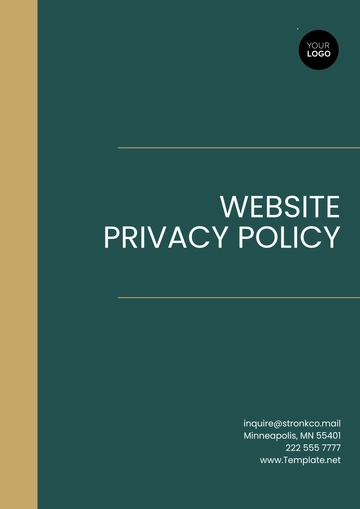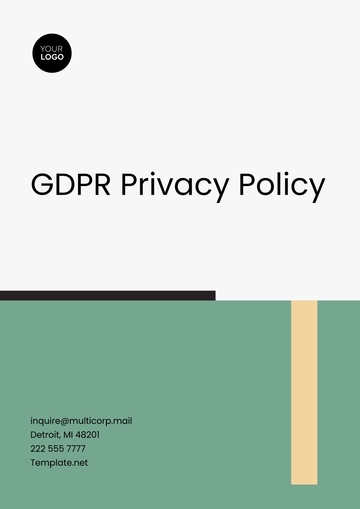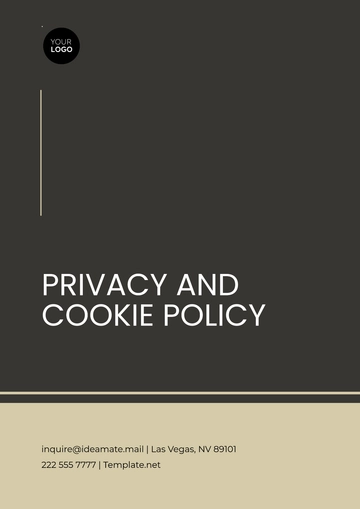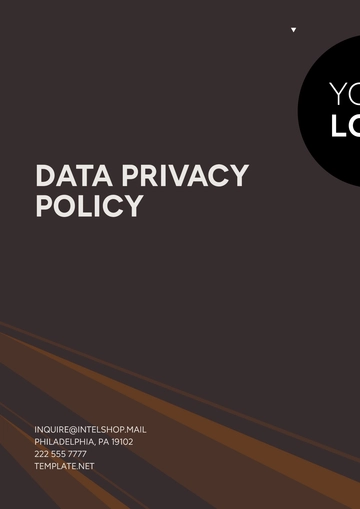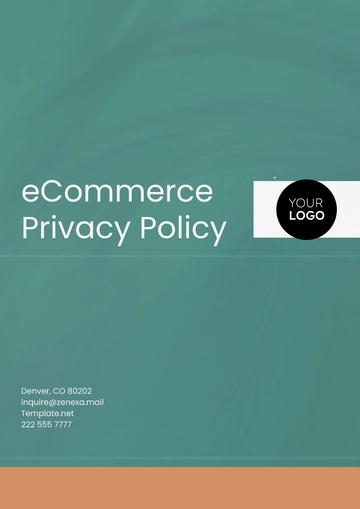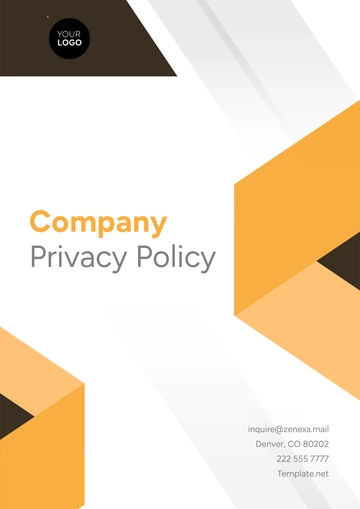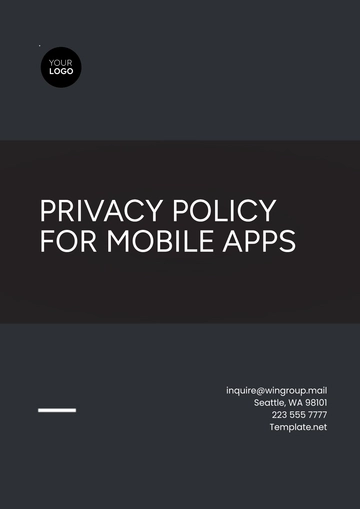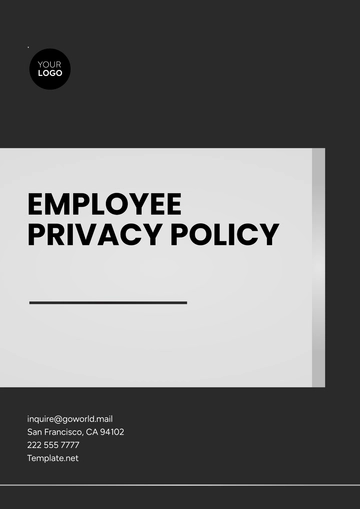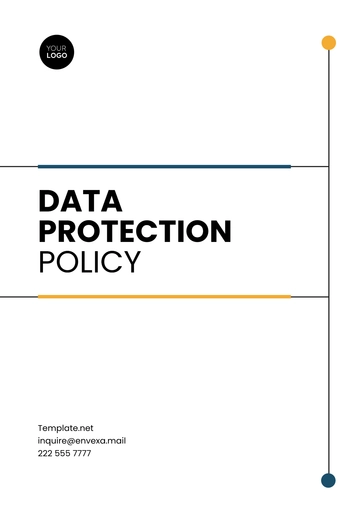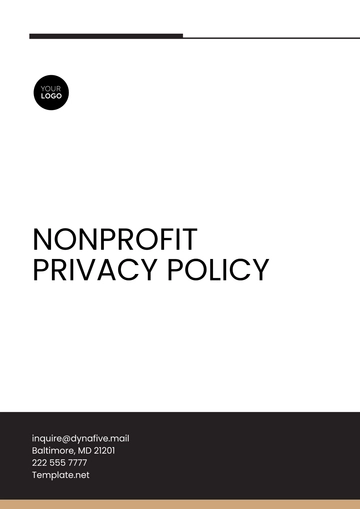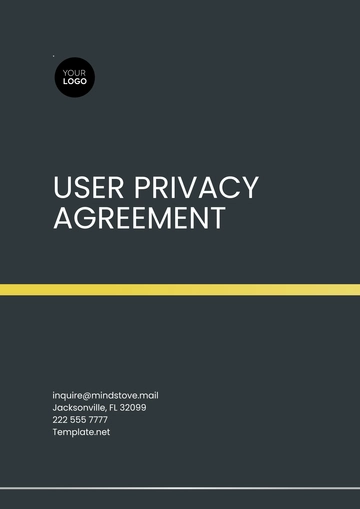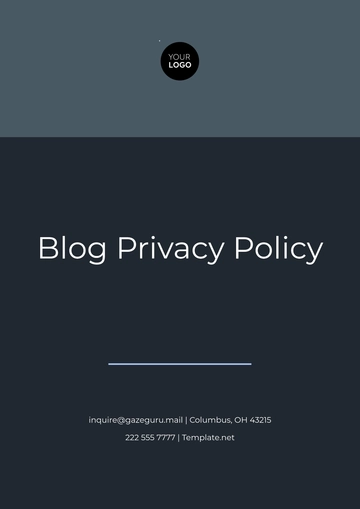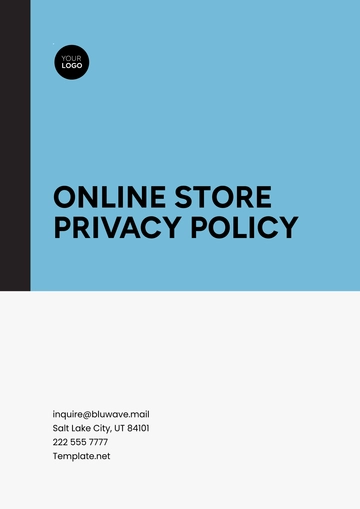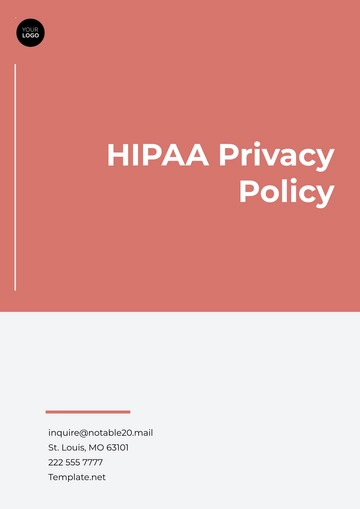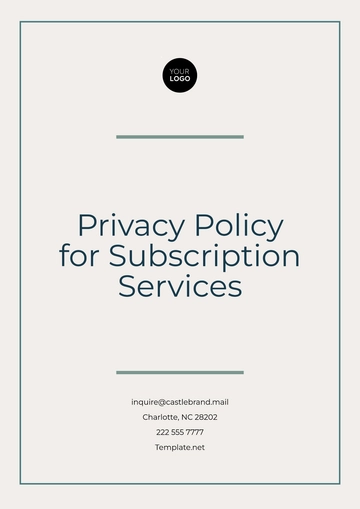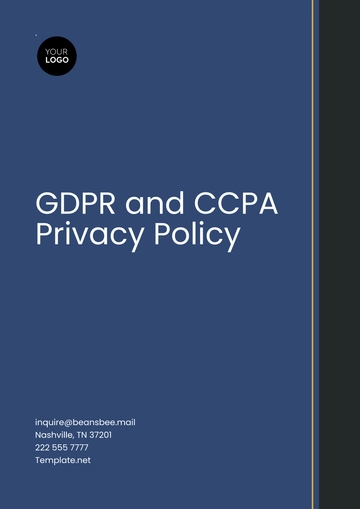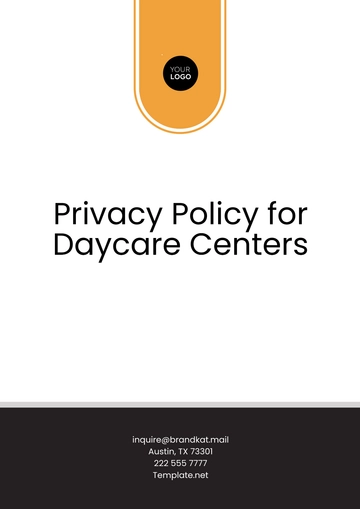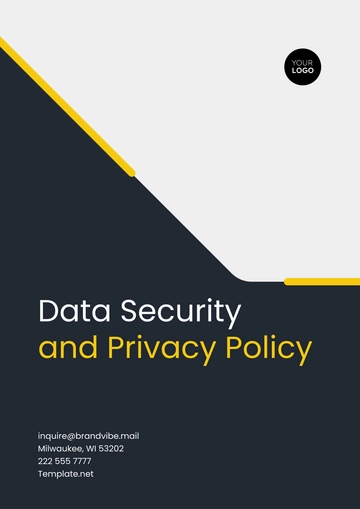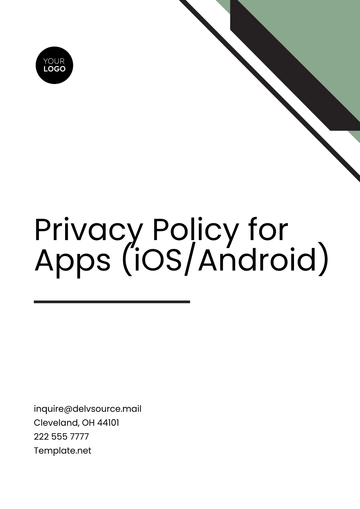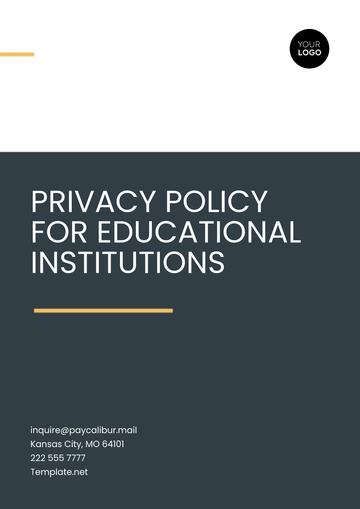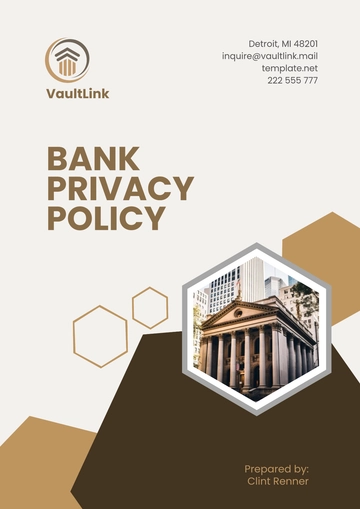Free Administration Data Privacy Policy and Procedure
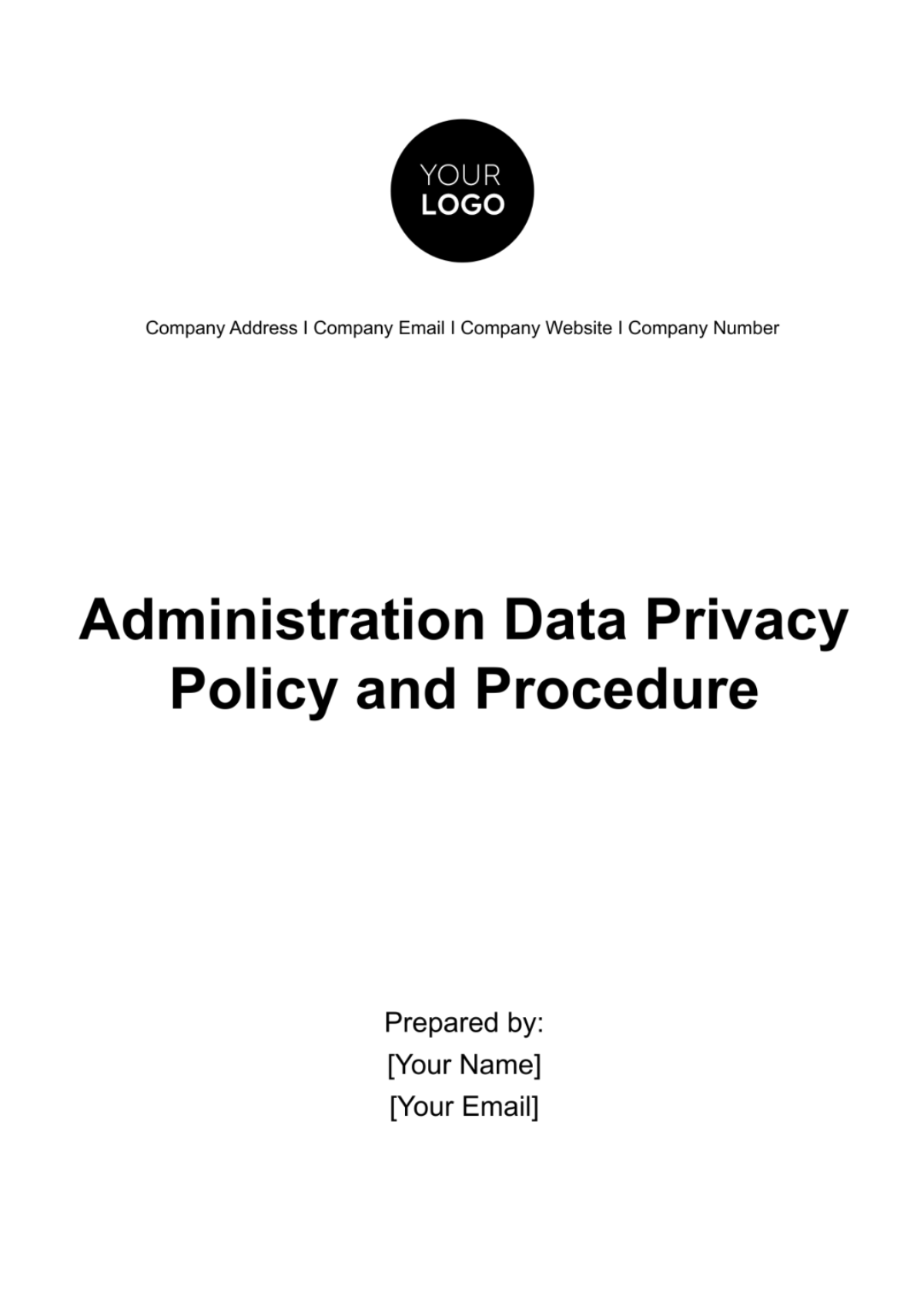
I. Introduction
At [Your Company Name], we prioritize the privacy and security of personal and sensitive information, aligning our operations with global data protection regulations. Our unwavering commitment to data privacy and security is the cornerstone of our business practices. By adhering to this policy, [Your Company Name] ensures transparency, accountability, security, and the safeguarding of individual rights throughout all data processing activities.
II. Scope of the Procedure
At [Your Company Name], our Administration Data Privacy Policy and Procedure is meticulously designed to ensure the utmost protection and ethical management of personal and sensitive data. It serves as a foundational pillar, guiding our interactions with all stakeholders, including employees, contractors, partners, and customers. This procedure rigorously outlines our commitment to data integrity, covering every facet of data handling from its collection, secure storage, and purposeful use, to its controlled dissemination, embodying our dedication to upholding global data protection standards.
A. Who is Covered
This policy applies universally to anyone involved with [Your Company Name]'s data, including employees at all levels, contractors who may access or process data on our behalf, partners who share data with us or vice versa, and customers whose personal information we handle. This wide-reaching applicability ensures that all parties understand their role and responsibilities in protecting data privacy.
Stakeholder | Description | Responsibilities |
|---|---|---|
Employees | All levels within [Your Company Name]. | Understand and comply with data privacy policies; protect and secure personal information. |
Contractors | Those accessing or processing data on behalf of [Your Company Name]. | Adhere to [Your Company Name]'s data protection standards; ensure data privacy and security. |
Partners | Entities that share data with [Your Company Name] or vice versa. | Respect data privacy agreements; protect shared personal information. |
Customers | Individuals whose personal information is handled by [Your Company Name]. | Be informed about how their data is used; exercise their data rights. |
B. Data Collection Practices
We emphasize the importance of collecting only the data necessary for specific, legitimate business operations. This includes obtaining explicit consent from individuals before their data is collected, ensuring that the process is transparent and that individuals are fully aware of the purpose for which their data is being used.
Principle | Method | Purpose | Consent Requirement |
|---|---|---|---|
Minimalism | Collect only necessary data. | For specific, legitimate business operations. | Required before collection; must be informed and explicit. |
Transparency | Provide clear information on data use. | Ensure individuals are aware of the purpose of data collection. | Integral part of obtaining consent; clarity on data usage. |
C. Data Usage Guidelines
Once collected, personal data is used strictly within the bounds of the consent given, for the purposes explicitly stated at the time of collection. We prohibit the use of personal data for any purposes other than those for which consent has been obtained, ensuring that personal information is handled responsibly and ethically.
Usage Principle | Consent Requirement | Prohibited Practices |
|---|---|---|
Purpose Limitation | Use data only for consented purposes. | Using data beyond consented purposes without additional explicit permission. |
Consent-Based Use | Strict adherence to the bounds of given consent. | Any use of personal data not explicitly consented to. |
D. Data Storage and Security
Secure storage of personal data is paramount. [Your Company Name] employs advanced security measures to protect against unauthorized access, data breaches, and other cyber threats. Regular audits and updates to our data storage systems are conducted to maintain the highest levels of data security.
Aspect | Strategy | Objective | Implementation |
|---|---|---|---|
Storage | Secure personal data storage. | Protect against unauthorized access and breaches. | Employ advanced security measures; regular system audits. |
Security | Ongoing data protection. | Maintain the highest levels of data security. | Periodic updates and enhancements to security systems. |
E. Rights of Individuals
We recognize and uphold the rights of individuals to access, amend, or delete their personal data in accordance with local data protection laws. By providing clear mechanisms for individuals to exercise their data rights, we promote transparency and empower individuals in the management of their personal information.
Right | Mechanism | Legal Compliance | Promotion |
|---|---|---|---|
Access | Easy access to personal data. | In accordance with local data protection laws. | Enable individuals to review their data. |
Amendment | Mechanisms to correct data. | Ensure accurate and up-to-date information. | Facilitate the update of personal information. |
Deletion | Clear process for data deletion. | Right to be forgotten. | Empower individuals to remove their data. |
III. Procedure
This section outlines [Your Company Name]'s meticulous approach to managing personal data, ensuring its use, collection, storage, and the rights of individuals are handled with the utmost integrity and in strict compliance with global data protection standards. Our methodical practices are designed to safeguard personal information, promote transparency, and establish a robust framework for data privacy that aligns with our core values of accountability and trust.
Data Collection
Our data collection practices are grounded in the principle of minimalism and relevance. We collect personal data only when it is essential for our business operations, ensuring that every piece of information gathered has a clear and legitimate purpose. This includes obtaining informed consent from individuals, where they are provided with comprehensive details about how their data will be used, thereby fostering a transparent relationship from the outset.
Principle
Practice
Consent Process
Purpose
Minimalism & Relevance
Collect only essential data for business operations.
Informed consent with comprehensive details on data use.
Ensure data collected has a clear, legitimate business purpose and fosters transparency.
Data Use
We are committed to using personal data in a manner that respects the consent given by individuals. Personal information is only used for the purposes for which it was collected, as explicitly communicated to the data subject at the time of collection. Any deviation from these purposes requires obtaining additional, explicit consent, thereby ensuring that personal data is handled with respect and integrity.
Consent Basis
Purpose Specification
Consent for Deviation
Integrity in Data Handling
Respect for given consent
Use data solely for purposes collected.
Obtain additional explicit consent for new purposes.
Ensure ethical handling and respect for personal data.
Data Storage
The security of personal data is paramount at [Your Company Name]. We employ cutting-edge security measures to protect personal information from unauthorized access and breaches. Our commitment to data security is ongoing, involving regular reviews and audits of our data storage systems to identify and address potential vulnerabilities, ensuring the highest levels of data protection.
Security Objective
Security Measures
Review and Audit
Data Protection Level
Paramount importance
Employ cutting-edge security technologies.
Regular system reviews and vulnerability audits.
Highest levels of data protection against unauthorized access and breaches.
Data Rights
We champion the rights of individuals over their personal data, fully supporting their rights to access, amend, and delete their information in accordance with applicable local data protection laws. Our processes are designed to make it straightforward for individuals to exercise their rights, promoting an environment of transparency and respect for personal autonomy.
Rights Supported
Access Mechanism
Legal Compliance
Transparency & Autonomy
Access, amend, delete
Straightforward processes for exercising rights.
Adherence to local data protection laws.
Promote an environment of transparency and respect for personal autonomy.
Compliance and Accountability
Ensuring compliance with data protection laws and our own stringent policies is a continuous process at [Your Company Name]. We regularly review our practices against current laws and regulations, adjusting our procedures as necessary to maintain the highest standards of data privacy. A culture of accountability is fostered through comprehensive training and clear communication of responsibilities, ensuring that all team members understand and uphold our commitment to data privacy.
Compliance Process
Policy Adjustment
Training and Communication
Culture
Continuous review against laws and regulations.
Adjust procedures as necessary.
Comprehensive training and clear responsibilities communication.
Foster a culture of accountability in data privacy.
IV. Reminders and Tips
This section underscores the importance of vigilance, precision, minimalism, and engagement in our data handling processes. It is designed to remind all stakeholders of the critical need to stay updated, adhere to established protocols, minimize data collection, and actively participate in the education and enforcement of data rights.
A. Continuous Monitoring and Updating
Stay ahead of the curve by regularly reviewing and updating our data privacy policies in alignment with the latest regulatory changes and industry best practices. This proactive approach ensures that [Your Company Name] remains compliant and responsive to new challenges and opportunities in data protection.
Component | Description | Implementation Strategy | Expected Outcome |
|---|---|---|---|
Policy Review Schedule | Establish a timeline for regular policy reviews. | Quarterly reviews; adjust as needed for regulatory changes. | Policies remain current and effective. |
Regulatory Monitoring | Keep abreast of global data protection laws. | Designate a team to monitor changes and advise on updates. | Ensures legal compliance and adaptability. |
Best Practices Integration | Adopt industry best practices in data privacy. | Benchmark against leading organizations and standards. | Enhance data protection strategies and processes. |
B. Adherence to Procedures
Maintain the highest standards of data privacy by strictly following the procedures outlined in our policy. There should be no exceptions or deviations, as consistency and discipline in our practices are key to safeguarding the personal information entrusted to us.
Component | Description | Implementation Strategy | Expected Outcome |
|---|---|---|---|
Zero-Tolerance Policy | Enforce strict compliance with data privacy procedures. | Implement disciplinary measures for non-compliance. | Uniform application of data privacy practices. |
Procedural Audits | Regular checks to ensure adherence to policies. | Schedule and conduct audits bi-annually. | Identifies and rectifies procedural deviations. |
C. Minimization of Data Collection
Emphasize the principle of data minimization by only collecting information that is essential for our operations. Additionally, make it a routine to purge outdated or unnecessary data, thereby reducing the risk of data breaches and ensuring efficiency in data management.
Component | Description | Implementation Strategy | Expected Outcome |
|---|---|---|---|
Data Collection Criteria | Define what data is essential for operations. | Develop guidelines for necessary data collection. | Streamline data collection, focusing on necessity. |
Data Purging Routine | Establish a process for eliminating unnecessary data. | Implement a regular schedule for data review and deletion. | Reduce data storage and potential breach risks. |
D. Stakeholder Engagement
Actively involve all stakeholders, including employees, customers, and partners, in understanding and exercising their data rights. Through education and transparent communication, foster a culture where data privacy is respected and valued by everyone within and associated with [Your Company Name].
Component | Description | Implementation Strategy | Expected Outcome |
|---|---|---|---|
Training Programs | Educate stakeholders on data privacy rights and responsibilities. | Develop and deliver comprehensive training sessions. | Informed stakeholders who understand and exercise their data rights. |
Transparent Communication | Foster an open dialogue about data privacy. | Utilize newsletters, meetings, and digital platforms to communicate. | Build a culture of trust and accountability in data handling. |
E. Data Breach Response Plan
A critical component of a robust data privacy framework is a well-defined and actionable plan for responding to data breaches. This plan outlines the steps to be taken in the event of unauthorized access to or disclosure of personal data, ensuring a swift and coordinated response to mitigate any potential harm.
Component | Description | Implementation Strategy | Expected Outcome |
|---|---|---|---|
Incident Identification | Procedures for detecting and reporting data breaches. | Implement detection tools and training for prompt identification. | Quick identification and assessment of data breaches. |
Response Team | A dedicated group responsible for managing data breaches. | Establish a cross-functional team with clear roles and responsibilities. | Effective and coordinated response to data breaches. |
Notification Procedures | Guidelines for informing affected individuals and regulatory bodies. | Develop a communication plan that complies with legal requirements. | Compliance with data breach notification laws and maintenance of trust. |
Post-Incident Analysis | Review and evaluation of the breach response to improve future readiness. | Conduct thorough investigations to identify lessons learned. | Strengthened data protection measures and reduced future risks. |
F. Data Protection Officer (DPO)
The appointment of a Data Protection Officer (DPO) is essential for overseeing the data privacy strategy and compliance. This section defines the role, responsibilities, and qualifications of the DPO, ensuring dedicated oversight of data protection practices.
Component | Description | Implementation Strategy | Expected Outcome |
|---|---|---|---|
Role Definition | Outline the DPO's key responsibilities and authority. | Clearly define the role within the organizational structure. | Enhanced focus on data privacy and compliance. |
Qualifications | Required expertise and qualifications for the DPO role. | Specify legal, IT security, and data protection knowledge requirements. | Competent and effective data privacy leadership. |
Reporting Line | The DPO's position within the organization's hierarchy. | Ensure the DPO reports to the highest level of management. | Unbiased and effective data protection oversight. |
G. International Data Transfer
As businesses operate on a global scale, the transfer of personal data across borders is often necessary. This section addresses the procedures and safeguards for international data transfers, ensuring compliance with international data protection regulations.
Component | Description | Implementation Strategy | Expected Outcome |
|---|---|---|---|
Transfer Mechanisms | Legal frameworks and tools for safe data transfers. | Utilize Standard Contractual Clauses (SCCs), Privacy Shield, or similar mechanisms. | Legally compliant and secure cross-border data transfers. |
Risk Assessment | Evaluate the risks associated with data transfers to third countries. | Conduct thorough assessments of the receiving country's data protection standards. | Informed decisions on international data transfers, minimizing privacy risks. |
Documentation and Record-Keeping | Maintain detailed records of international data transfers. | Implement a system for documenting transfer justifications and safeguards. | Accountability and transparency in cross-border data handling. |
- 100% Customizable, free editor
- Access 1 Million+ Templates, photo’s & graphics
- Download or share as a template
- Click and replace photos, graphics, text, backgrounds
- Resize, crop, AI write & more
- Access advanced editor
Template.net brings you a robust Administration Data Privacy Policy and Procedure Template—an editable, easy-to-use solution for the modern Marketing Industry. Quickly tailor your privacy policy with this customizable document template, editable in our AI Editor Tool. It's a comprehensive tool, designed for streamlined efficiency and assured compliance. Let us simplify your data privacy documentation today!
You may also like
- HR Policy
- Restaurant Policy
- Company Policy
- Accounting Policies and Procedures
- Website Policy
- Privacy Policy
- Safety Policy
- School Policy
- IT and Software Policy
- Law Firm Policy
- Construction Policy
- Interior Design Policy
- Travel Agency Policy
- Education Academic Policy
- Security Policy
- Real Estate Policy
- Expense Policy
- Software Policy

